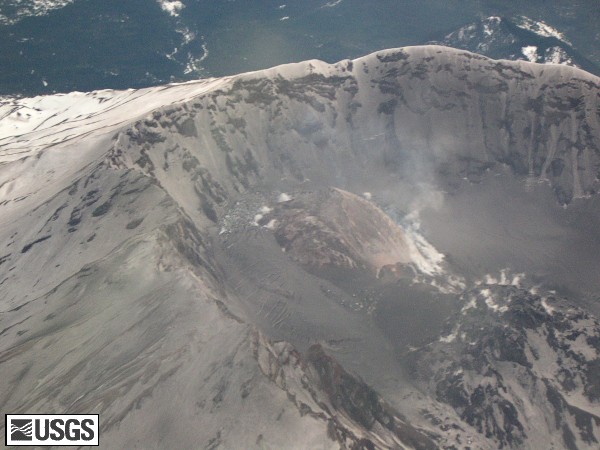
Picture courtesy of USGS
Volcanoes
Wikipedia defines a volcano as "a geological landform (usually a mountain) where magma (rock of the earth's interior made molten or liquid by high pressure and temperature) erupts through the surface of the planet." Although there are numerous volcanoes (some very active) on the solar system's rocky planets and moons, on Earth at least, this phenomenon tends to occur near the boundaries of the continental plates.
A volcano is a vent in the earth through
which hot gases and molten rock rise to the surface. A cone shaped
mountain of erupted material around such a vent is also called a volcano. The
name is taken from Vulcano, an island north of Sicily in the Mediterranean Sea.
The island was given its name by the ancient Romans because it spewed smoke like
vapor, and was thought to be the home of Vulcan, their god of fire. Click here
to view a diagram of a volcano.
A volcano consists of a fissure in the earth's crust, above which a cone of volcanic material has accumulated.
At the top of the cone is a bowl-shaped vent called a crater. The cone is formed by the deposition of molten
or solid matter that flows or is ejected through the vent from the interior of the earth. The study of volcanoes
and volcanic phenomena is called volcanology.
Most volcanoes are composite landforms
built up partly of lava flows and partly of fragmental materials. Italy's Mount Etna in Sicily is an example
of a composite cone. In successive eruptions, the solid materials fall around the vent on the slopes of the
cone, while lava streams emerge from the vent and from fissures on the flanks of the cone.
The cone is built up of layers of fragmental materials and of lava flows, all inclined outward away from the
vent. Deep lakes, such as Crater Lake in Oregon, eventually occupy some enormous, craterlike basins, called
calderas, at the top of long-dormant or extinct volcanoes. Some calderas are the result of cataclysmic
explosions that destroy the erupting volcano. Others form when the subterranean magma chamber, emptied by
repeated eruptions, can no longer support the weight of the volcanic pile above it. Therefore it collapses.
Volcanoes are located all over the world and in the United States. To see a list of the earth's active volcanoes, click here.

Picture courtesy of
USGS
These are other sites where you can learn more about volcanoes: